#lichenologist
Text

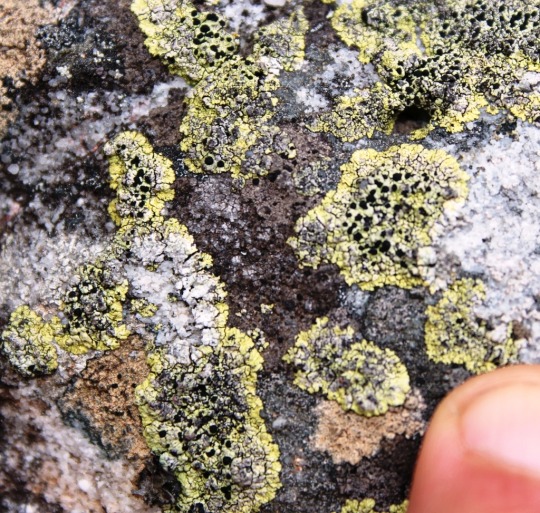

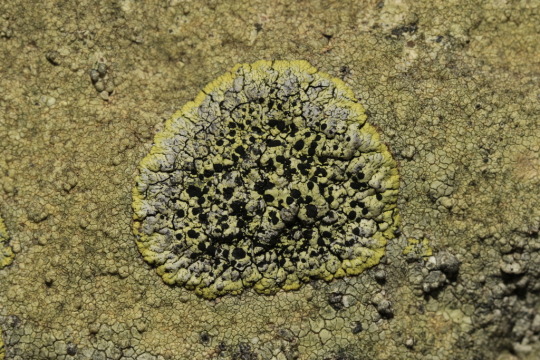
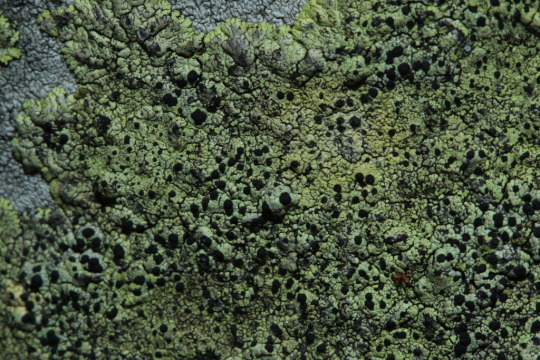


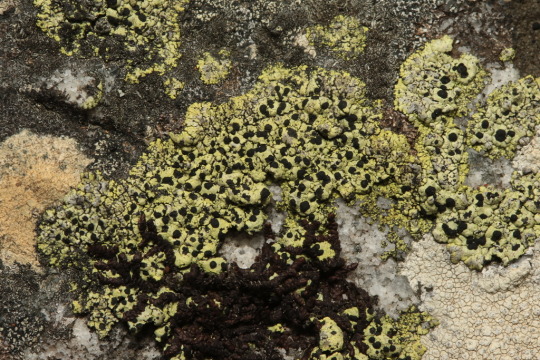
Diploicia africana
This crustose-placodioid lichen grows in yellow rosettes on siliceous, rock in South Africa. The upper surface is often bleached and wrinkled toward the center of the rosette, and speckled with black, lecideine apothecia. Being that D. africana is a) crustose b) saxicolous and c) endemic to the southern hemisphere, it shouldn't be surprising that this lichen appears to be largely understudied, and it might be more widespread than currently recognized.
images: source
info: source
#lichen#lichens#lichenology#lichenologist#mycology#ecology#biology#fungi#fungus#symbiosis#symbiotic organisms#algae#life science#environmental science#natural science#nature#the natural world#Diploicia africana#Diploicia#trypo#trypophobia#I'm lichen it#lichen a day#daily lichen post#lichen subscribe
58 notes
·
View notes
Text
Ebony teens fuck and tug
California gay sex boys fuck and local secret cam gallery when his
Crossdresser Ria Alexa Hot Sex
Mi primer video Alex Luna
Audrey Royal three ways sex with two LP
Skinny anal teen Kira Roller
Wild babe with appealing ass likes face sitting her crazy playmate
Indian public blowjob and cum in mouth
Lesbian domina in latex feet worshiped by pussy eating babe
MILF Krissy Lynn Loves Double Dicking And Facial
#vice-admiralship#indebtedness#bros.#edulcorated#eurythmies#Fjelsted#resections#stinkbugs#holometabolism#iron-jointed#radix#Yemane#people's#andromonoecism#land-measure#Christi#uniforms#subtheme#underlineation#lichenologist
0 notes
Photo

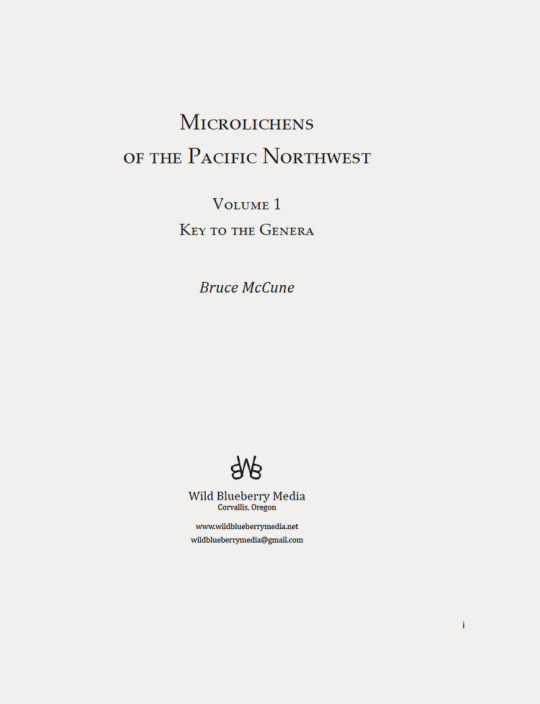
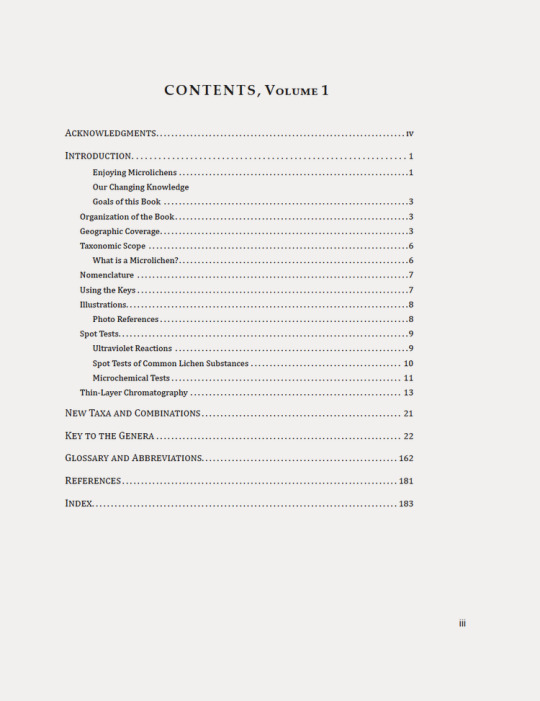

Bruce McCune, Microlichens of the Pacific Northwest. Volume 1: Key to the Genera, Wild Blueberry Media, Corvallis, OR, 2017
#graphic design#botany#biology#chemistry#phytochemistry#photography#lichen#book#cover#book cover#bruce mccune#lichens of the pacific northwest#northwest lichenologists#wild blueberry media#oregon#2010s
165 notes
·
View notes
Photo

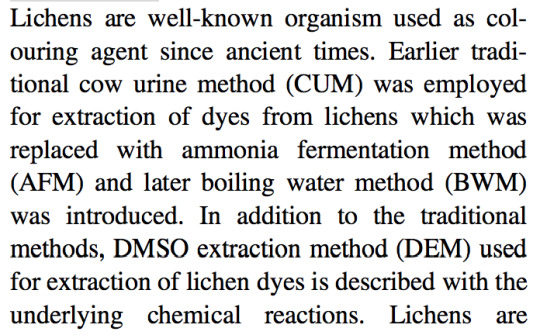
:/
#lichenologists need to be stopped#for anyone interested this is from shukla and upreti#in chapter 12 of recent advances in lichenology vol 2 2015
7 notes
·
View notes
Text
woke up yesterday and shamefully closed all my mushroom tabs before work
#if i get any more interested in mycology im going to sack it all off and become a mycologist/lichenologist#that or get murakami disease which. if the fic's any indication i already have the virus#at least i branch out a bit#her ear was a mushroom? boring. his balls were lycogala#haarping on
4 notes
·
View notes
Text

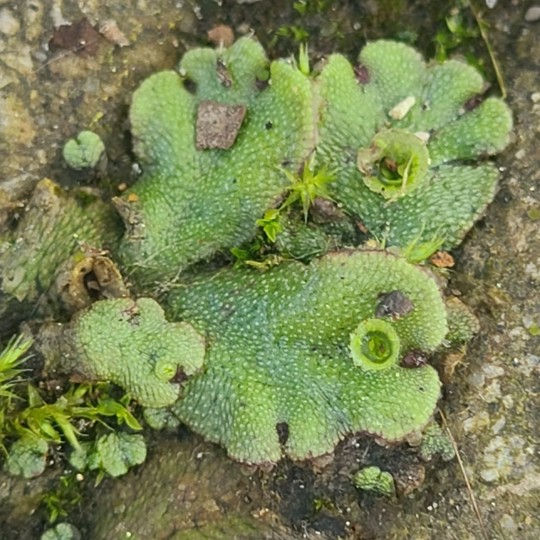
I can't for the life of me identify this lichen, i believe it is a foliose variety or possibly squamulose if there is no cortex on the underside, with visible apothica, growing on decaying organic matter between the stones of the path its growing on
#theres over 20000 varieties of lichen and im not a lichenologist and dont have a quality resource to compare with#glub glub
2 notes
·
View notes
Text
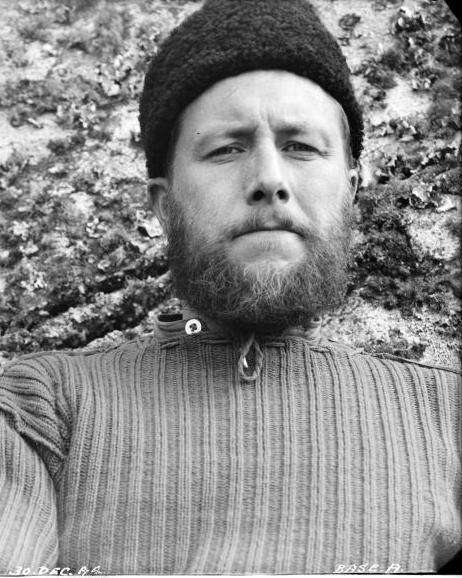
Happy birthday Elke Mackenzie!
British lichenologist Elke Mackenzie was born on 11 September 1911. She's best known for her participation in Operation Tabarin, where she travelled to Antarctica during the 1940s to collect and study lichen samples. Elke came out as trans in 1976, and announced in the International Lichenological Newsletter, that she “should now be addressed as Dr. Elke Mackenzie.”
Before coming out, Elke had subtly inserted her true identity into her work - a 1972 paper of hers, published under her deadname, acknowledged "Miss Elke Mackenzie for technical and bibliographic assistance in the preparation of this paper."
Learn more
89 notes
·
View notes
Text



Step 1) become a lichenologist ✔️
Step 2) abuse my lichenological knowledge to create this boy✔️
Step 3) play him in dnd ✔️
Then he takes over the world and everyone loves him forever because he is the best
#old gods#ascomycota#lichen#lichen creatures#he is juste a little creacher#thatse it#dnd#dnd character art#art#illustration#artists on tumblr#character design#concept art#dnd art#character art#dnd character
207 notes
·
View notes
Note
you are so smart, i always learn a lot from your reblogs/tags. thank you! i'm off to google the difference between a lichen and a moss.
haha I am actually not smart at all but I do watch a lot of YouTube - I'll put what I watched below but I know you don't do video so here's some articles I've been reading about lichen that I thought were interesting!
an overall explainer about lichen & its connection to air quality from the national park services
an article on The Scientist about new types of bacteria identified in lichen that might mean their guilds are even more complex than previously thought (needs a free, easy-to-opt-out-of-marketing signup)
you might need to sci-hub this but this scholarly article about the big questions we still need to answer about lichen, who they are and what they do is very accessibly written once you get past the paywall (remember it's always ethical to sci-hub academic articles because fuck academic journals)
I couldn't switch my brain off after work on whenever, maybe Monday, even though I was fucking knackered as hell and ended up watching this.
youtube
it's not the slickest or highest budget but it's from the University of Florida institute for Food and Agricultural studies and the guy explains what's going on with these weirdest possible things really well
further viewing: this Royal Botanic Gardens of Edinburgh video with 10 lichenologists talking about their favourite lichens is soooo wholesome and wonderful.
11 notes
·
View notes
Text
Discovering Citizen Science
I have mentioned in previous blog posts that one of the best decisions I have made in the last 5 years was to get involved in my local mycological society. Foray NL is a not for profit collaborative group that involves folks from a variety of backgrounds including mycologists, lichenologists, indigenous partners, students and citizen scientists. All of these people get together once a year to collect, analyze, identify, photograph, and catalogue mushroom and lichen species from across Newfoundland. Each year new species are discovered, species that have never been collected before or in some cases never been identified before. There are so many different kinds of mushrooms and lichens. Lichen identification by Foray NL has helped to play a part in conservation efforts here in Newfoundland. It makes me feel like we are making a small but meaningful difference in the world. It is truly fascinating that despite the tens of thousands of specimens collected over the 20 years Foray NL has been active, we still have only grazed the surface of biological variety. This element of discovery really ignited a curiosity in me that has led to a new career path, and has helped me discover a joy in continued studies as an adult (such as this course!)
Citizen science is about asking questions and observing. Check out this mushroom house party! What kind of music do you think they are listening to?
In 2019 when I attended my first Foray NL three day event. I was initially a bit nervous, but interested in learning more about mushrooms as an amateur forager. It fascinated me to discover that there are edible food sources wherever we go. Knowing what to eat was just a matter of researching a bit more about plant and fungi biology. As a forager I wanted to know what else I could eat aside from the wild berries, Labrador tea, and plethora of edible backyard weeds. I wanted to dive head first into the woods and talk to the people that knew about wild food sources, and how not to die while eating mushrooms. What I didn’t expect was a welcoming, interesting community of people who were maybe a bit eccentric, but incredibly knowledgeable, funny, caring and ready to take on the world on mushroom at a time. I don’t remember what I was expecting, but when I stepped into the “mush-room” I was blown away. The “mush-room” is a large makeshift laboratory where all the species of mushrooms that have been collected over the weekend are laid out for identification on tables. There were piles of books for identification, a photography booth, microscopes, dehydrators and tables and tables of unique fungi and lichens. The variety was astounding to someone who really only knew about wild chanterelles. I went past each specimen taking in their names, features and examining their qualities. I observed their spores on microscope slides, witnessed bio-luminescence in the photo room, and along the way learned so much from each person I spoke with. It was fun, and I helped to contribute to the collection, my role even had a name - citizen scientist. This slow building of knowledge has been incredibly rewarding and the yearly event is something I continue to look forward to. My hope is that by sharing my story other folks will reach out to similar organizations and seek out the knowledge that lingers there. You too can be a citizen scientist!
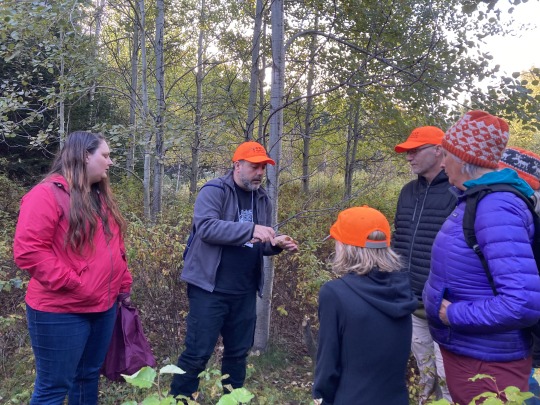
Folks at Foray NL learning about how to identify mushrooms.
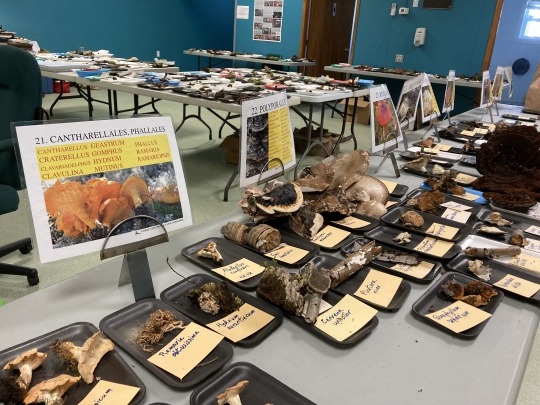
The "Mush-Room" identification tables at Foray NL

One specimen of identified mushrooms on the table.
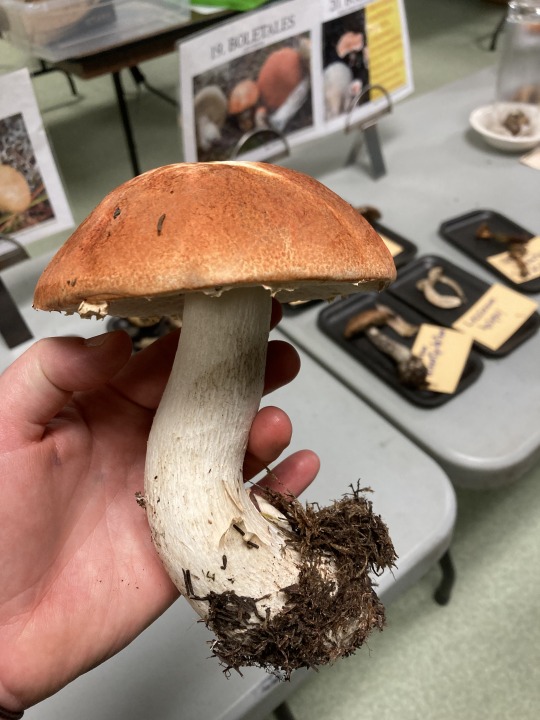
A bolete! From the tables, 2023.

Science! Is for everyone!
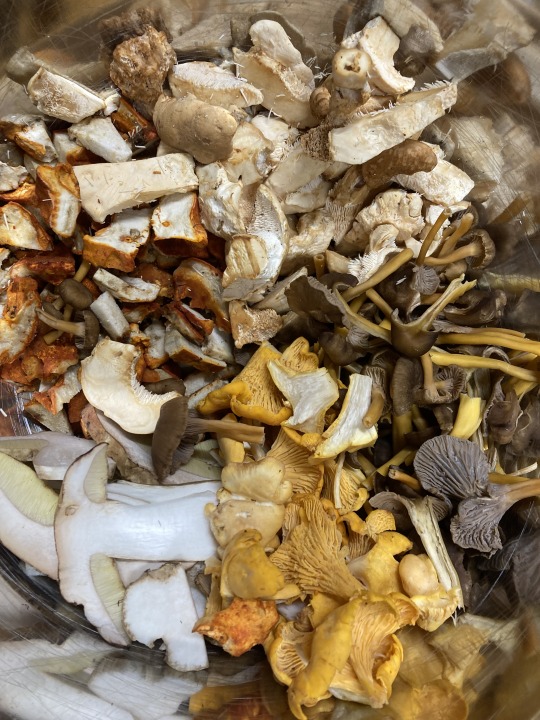
My favourite part, prepping and eating a foraged fungi feast for everyone at Foray NL to enjoy after a day in the woods collecting specimens.
8 notes
·
View notes
Text

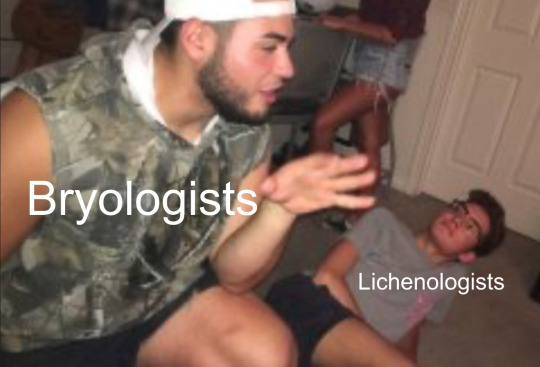
We are best friends. We have a joint society, the American Bryological and Lichenological Society (ABLS), aka Understudied Botany Bros Society since 1898 🤝 .
Please use these as signs of appreciation on the posts of your Bryologist/Lichenologist friends (or if you are particularly interested in one or the other. Hobbyists my beloved)
#bryology#lichenology#botany#botany memes#lichen memes#moss memes#mosscore#science#bryophyta#bryophytes#botany facts
24 notes
·
View notes
Text
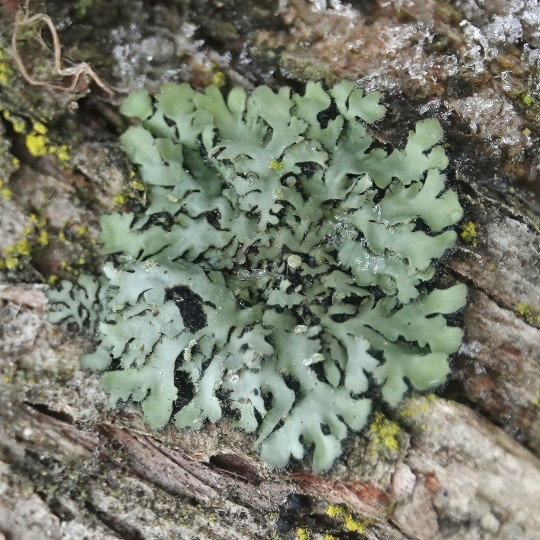
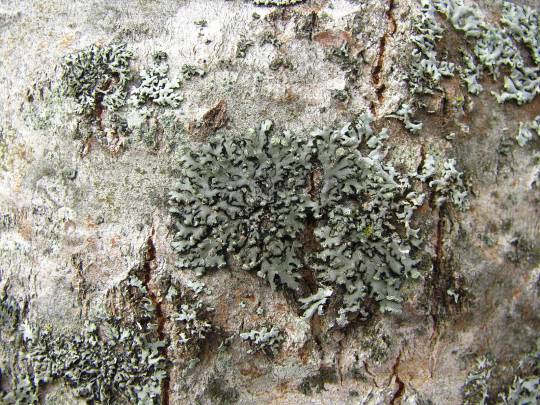
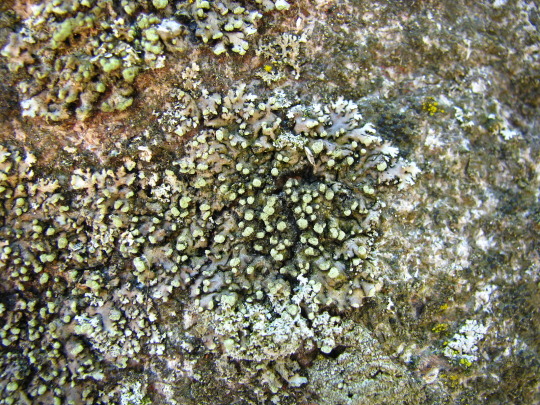
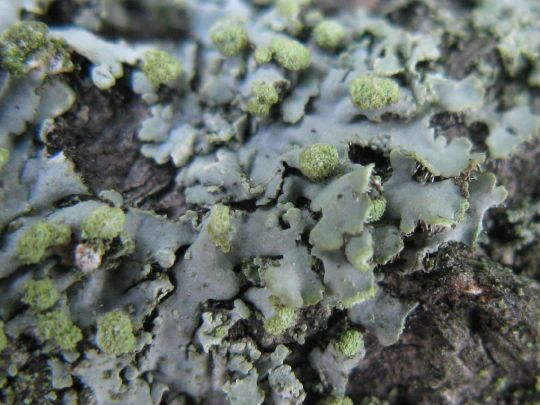

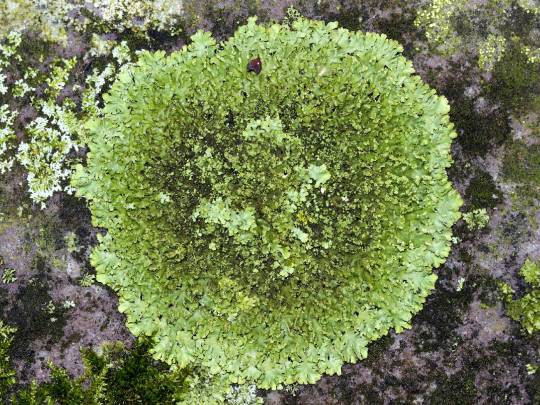
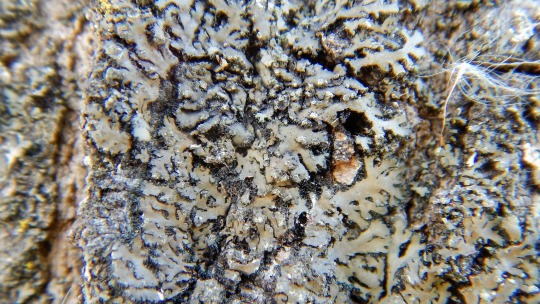
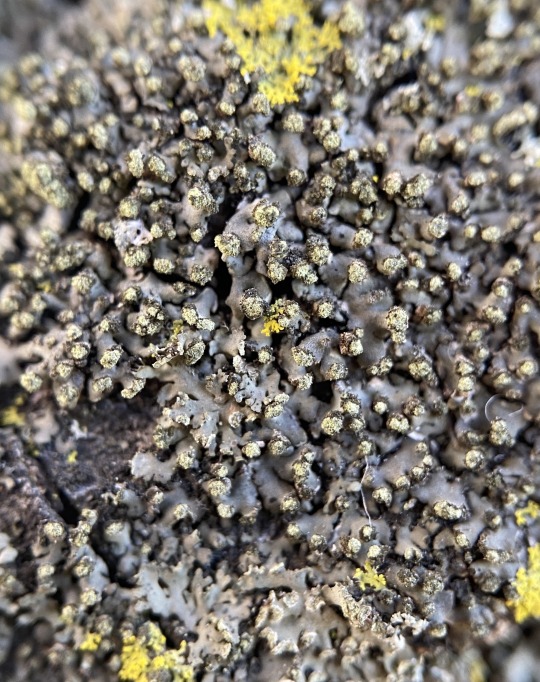
Phaeophyscia pusilloides
Pompom shadow lichen
This foliose lichen grows in rounded rosettes up to 3 cm in diameter. It has narrow, elongated lobes closely attached to the substrate. The upper surface is gray-brown when dry, and bright green when wet! And the lower surface is black with long, simple rhizines. It produces powdery soredia from capitate or labriform soralia on the lobe tips. It only rarely produces apothecia, which have a rhizinate margin and a brown disc. It has a green algal photobiont. P. pusilloides grows on nutrient-enriched, deciduous trees in temperate, montane valleys in North America and Europe.
images: source | source
info: source | source
#lichen#lichens#lichenology#lichenologist#mycology#ecology#biology#fungi#fungus#symbiosis#symbiotic organisms#algae#Phaeophyscia pusilloides#Phaeophyscia#I'm lichen it#lichen a day#daily lichen post#lichen subscribe#trypo#trypophobia#life science#environmental science#natural science#nature#naturalist#beautiful nature#weird nature#the natural world
46 notes
·
View notes
Note
just discovered this poll after the bracket is already over, but if you ever run another one may I humbly suggest Elke Mackenzie. She was a lichenologist who spent two years in Antarctica during the second world war, as part of a mission to establish a British presence there. She did a bunch of really cool moss science and also came out as trans and transitioned in 1971 and was unfortunately shunned from the academic community for doing so.
I feel like being (as far as I know) the only confirmed transgender member of an antarctic expedition makes her deserving of a place in a bracket!
omg she sounds so cool!! i wish i’d gotten a chance to include her! i will for sure keep her in mind for if/when i run a second bracket :]
3 notes
·
View notes
Photo

The Lichens of the Pacific Northwest Image Collection, Department of Botany and Plant Pathology at Oregon State University, Oregon State University Libraries, Corvallis, OR
#botany#biology#chemistry#phytochemistry#lichen#lichens of the pacific northwest#bruce mccune#northwest lichenologists#oregon#2010s#2020s
78 notes
·
View notes
Text
anyway I survived the Yukon and it WILDLY exceeded my expectations. I met 5 (!) lichenologists and have never felt more instantly welcomed into a group. Biologists are always weird as hell (affectionate) but these ones were my type of weird, ya know? I also got to go in a helicopter twice to look for lichens in the alpine! I had such a good time I'm seriously thinking again about doing a masters...
#personal#not plants#bioblitz#on fleek in beaver creek#i have so many more thoughts and feelings! aaaa i love all my lichen dads (gender neutral) so much!!
21 notes
·
View notes
Text



youtube
Northwest Lichenologists - Home (wildapricot.org)
#lichen#blitz#desperados#northwest#Masonhalea richardsonii#premiere#tundra#perma#bloc#techno#evolution#symbioses#endosymbiosis#planet#amoeba#Paulinella#photosynthesis#Youtube
0 notes